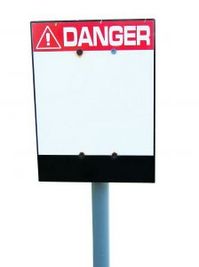In situations where someone has been injured due to a traumatic accident like a car or truck collision, severe burns can result. These types of injuries can be one of the most emotionally and financially costly damages that anyone can suffer. Various sources — including fires, hot liquids, chemicals, and electrical incidents — can cause severe burns. The severity of the burns can significantly impact victims, affecting their physical health, emotional and mental well-being, and financial stability.
Degrees of Burn Severity Explained
The extent of a burn injury is classified into four degrees, increasing by severity.
- First-degree burns are relatively minor and should only cause skin redness and discomfort.
- Second-degree burns are much more serious, causing blistering, severe pain, and a risk of infection. Healing from these burns can take weeks, and scarring is common.
- Third-degree burns are even more severe, causing damage to both the epidermis and dermis layers of skin. These burns often result in a leathery or waxy appearance and nerve damage can cause numbness. Treatment for third-degree burns is extensive and requires skin grafting and rehabilitation.
- Fourth-degree burns are the most severe and can cause permanent disability, loss of limb function, or disfigurement. Long-term complications such as infections, contractures, and chronic pain are common with fourth-degree burns.
Determining Burn Severity in New York Personal Injury Cases
Determining burn severity involves assessing various factors to understand the extent of tissue damage and potential complications. Here are five key factors used to evaluate burn severity:
- Depth of Burn: Burns are classified by depth into superficial, partial-thickness, and full-thickness. Superficial burns affect only the top layer of skin (epidermis), partial-thickness burns extend into the deeper layers of the skin (dermis), and full-thickness burns involve damage to all skin layers and underlying tissues.
- Extent of Burn: The percentage of total body surface area (TBSA) affected by the burn is crucial in determining severity. This percentage is usually calculated using the Rule of Nines or the Lund and Browder chart, which divides the body into regions, each representing a specific percentage of TBSA.
- Location of Burn: Burns occurring on specific areas of the body — such as the face, hands, feet, genitalia, or major joints — can be more severe due to their potential impact on bodily functions and the risk of complications like contractures or impairment of movement.
- Age of the Patient: Age can significantly influence burn severity. Children and older adults are more susceptible to burns due to thinner skin and decreased ability to respond to injury. Pediatric patients also have higher metabolic demands and are more prone to fluid loss and electrolyte imbalances.
- Associated Injuries or Conditions: Burns are often accompanied by other injuries, such as inhalation injuries from smoke or chemicals, trauma from the burn incident (e.g., falls or explosions), or underlying medical conditions that can complicate management and increase mortality risk.
Legal Implications and Compensation for Burn Injuries
Liability for burn injuries is determined through assessing negligence, duty of care, and causation, regardless of the defendant’s identity. Factors such as product defects, unsafe premises, or negligent actions contribute to legal accountability in cases involving burn injuries.
In 1992, the infamous case of Stella Liebeck v. McDonald’s Restaurants symbolized the legal implications and compensation for burn injuries. Stella Liebeck, a 79-year-old woman, suffered third-degree burns from spilled hot coffee, leading to a lawsuit against the fast-food giant. This case sparked intense debate over personal responsibility, corporate liability, and the legal system’s role in compensating victims of such injuries.
Compensation for burn injuries typically involves medical expenses, rehabilitation costs, lost wages, and pain and suffering. However, the amount awarded can vary greatly depending on the severity of the injury, degree of negligence, and jurisdictional factors.
Liebeck’s case highlighted the duty of companies to ensure product safety and provide adequate warnings. Despite McDonald’s arguing that the coffee’s temperature was industry standard, the jury found the company negligent and awarded Liebeck $2.86 million in punitive damages, later reduced on appeal.
Legal Representation for Burn Injuries in NYC
Hiring a personal injury lawyer streamlines the litigation process, ensures fair compensation for burn injuries, and maximizes chances of success. An attorney’s skill in negotiation and litigation can take the lead in the fight to hold responsible parties accountable for burn injuries in New York City.
Wingate, Russotti, Shapiro, Moses & Halperin, LLP lawyers have been rated “AV” by Martindale-Hubbell, the highest possible rating for an attorney for both ethical standards and legal ability. Contact our NY burn injury attorneys at (212) 986-7353 today and receive a free initial consultation.




